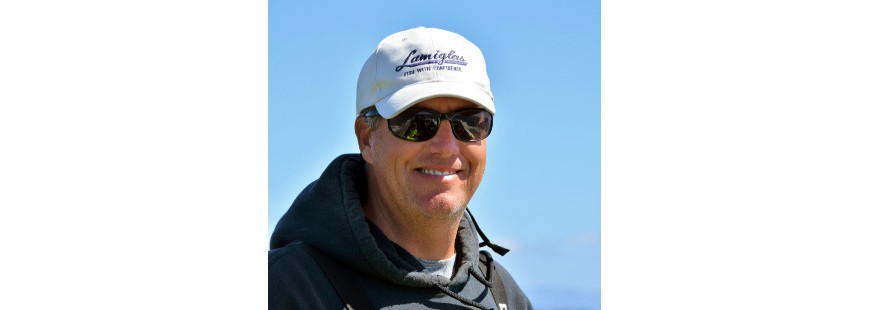Federal Fisheries Policy Needs Face-to-Face Discussion
I recently had the pleasure of presenting to our Eugene Chapter of The Association of Northwest Steelheaders, highlighting the different campaigns we’re engaged in at headquarters. It’s always great getting out to these chapter meetings to hear what our members have to say about the work we’re doing on their behalf.
It’s not always an easy conversation, however, because our membership is diverse, representing a large scope of interests from mining, logging, conservation, hunting and of course angling. I consider myself somewhat of a polite guy, but I realized a long while ago that I’ll never please everybody with the issues I work on, no matter what my strategy.
As I progressed through my PowerPoint presentation, I got a question here or there, and then came the gentleman with the chainsaw shirt on (sorry, his name escapes me) that read “Stihlhead.” Now even I could appreciate the play on words. I knew what he actually meant, celebrating our namesake, of course, the iconic species of the Pacific Northwest, the steelhead.
The Association of Northwest Steelheaders was founded 56 years ago on removing steelhead from the food-fish category, taking away the opportunity for non-tribal commercial fishermen to sell this species on the open market. It arguably remains the organization’s greatest success to date, elevating this sensitive species to near God-like status. Anyone or anything that endangers this species is automatically vilified. Despite working on numerous salmon-related conservation campaigns, steelhead remain the cornerstone species for our organization.
Anglers in the Northwest don’t just start out fishing for steelhead; that would be a bad strategy. It took me two years of effort before I caught my first steelhead, and I caught it incidentally while fishing on the Wilson River in pursuit of fall Chinook. (Why does Chinook get a capital C and steelhead is still lower case anyway?) Most of us start out pursuing rainbow trout as our gateway “drug with a tug” and after you’ve caught a bunch, who wouldn’t want to catch a sea-going super-sized rainbow trout anyway? They are truly a beautiful specimen.
Back to my presentation… The gentleman had the flyer we had sent out to our membership for our end-of-year donation ask, highlighting our “success” on gaining more riparian area on private forest lands for the fish we care so much about. He was visibly upset about the land grab that was going on, as was many private landowners during the months-long discussion with the Oregon Department of Forestry. After explaining why I was so passionate about lethal summer water temperatures in relatively intact watersheds and their relation to healthy riparian buffers, I think he could see my point. Couple that with the fact that Oregon is one of the better western states with only 4% of our historical abundance of wild salmon left in our region. We managed that slaughter of a benchmark in just the last 150 years.
Admittedly, it is hard for me to see another perspective when salmon and the communities they support have lost so much over such a short period of time, and sport anglers are typically the first user group to see restrictions on our activities when tough times lie ahead. I do have to remove myself a bit, however, and put myself in the shoes of those affected to understand where the middle ground might be. The conservation community now knows there has to be incremental steps to recovery and given our population base, we’ll NEVER see the good ol’ days again. It was a good conversation we had, however, and much to my embarrassment, he came up to me after the meeting and shook my hand and asked if we could still be friends! “Of course we are,” and I appreciated hearing his concerns and his passion for the issue.
Most of these conversations don’t happen face to face. We get so worked up about what we heard or how we perceive how the “other group” is trying to change the things we don’t want changed. When these discussions can happen in a more community based forum and people can understand each other’s perspective, real progress can be made, and everyone can leave the conversation as friends (I obviously don’t know how it works in Congress…).
The reauthorization of the Magnuson-Stevens Act deserves an open and public conversation on how best to craft legislation that addresses the concerns of all affected communities. More importantly, the renewed law must build upon the foundation of success thus far, while also being visionary enough to address the needs of future generations of fish and fishermen. The act celebrates its 40th anniversary in April, and Congress continues to take a hard look at how to make the reauthorization process workable for all parties. Most would agree that the act has been successful in recovering depleted stocks of fish since its last reauthorization, so let’s be careful in suggested revisions in the upcoming version. If this body of government truly follows sound science and community input, it stands a real chance to a promising future for this resource. It’s up to the people of this republic to ensure that our voices are heard and to guide this policy through the challenging conversations ahead.



Geez, 4% of historic levels!!! I thought the M-S Act provided for more protection than that. ( 50%??)
I’m not a scientist or a fisher but it doesn’t seem that allows much room for other factors – ie.. global warming, ocean acidification, etc.